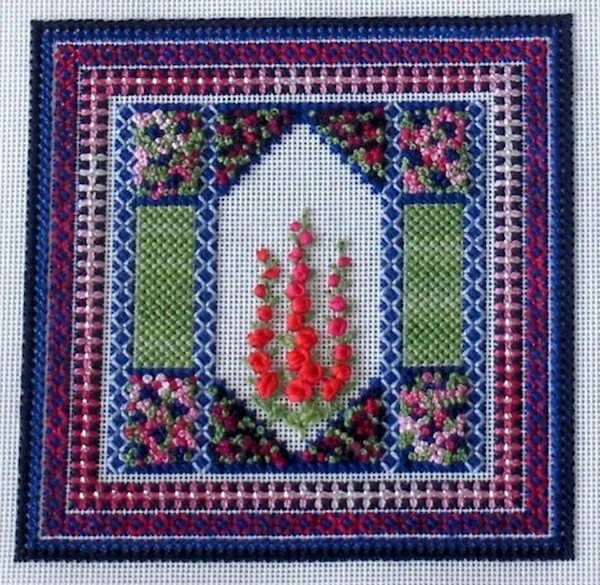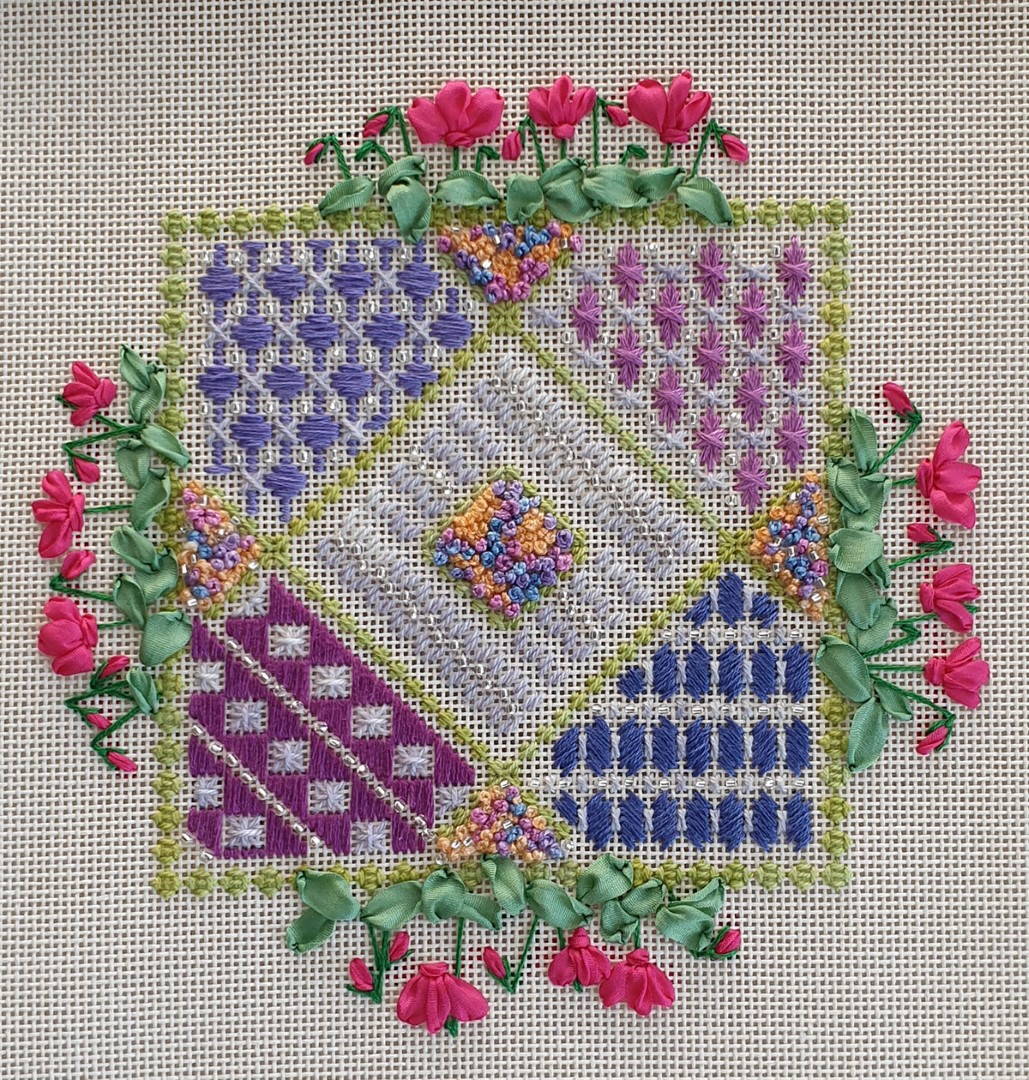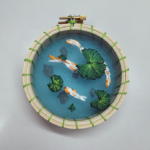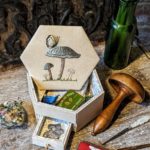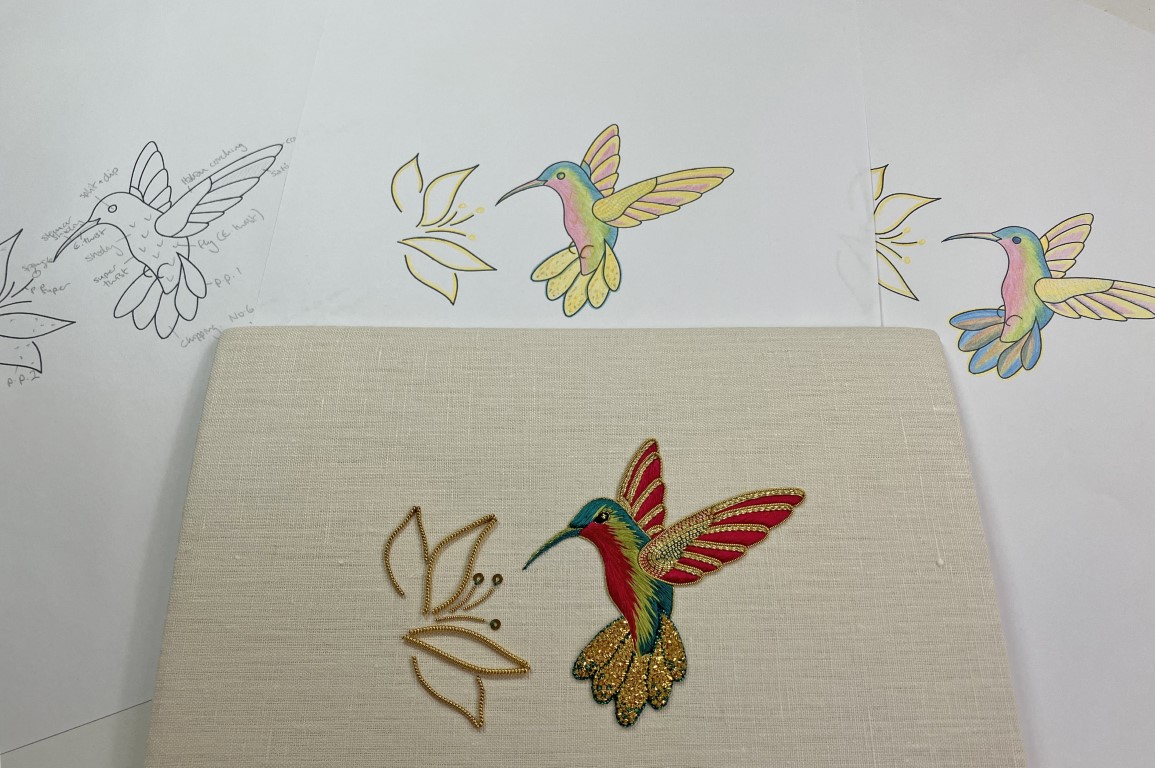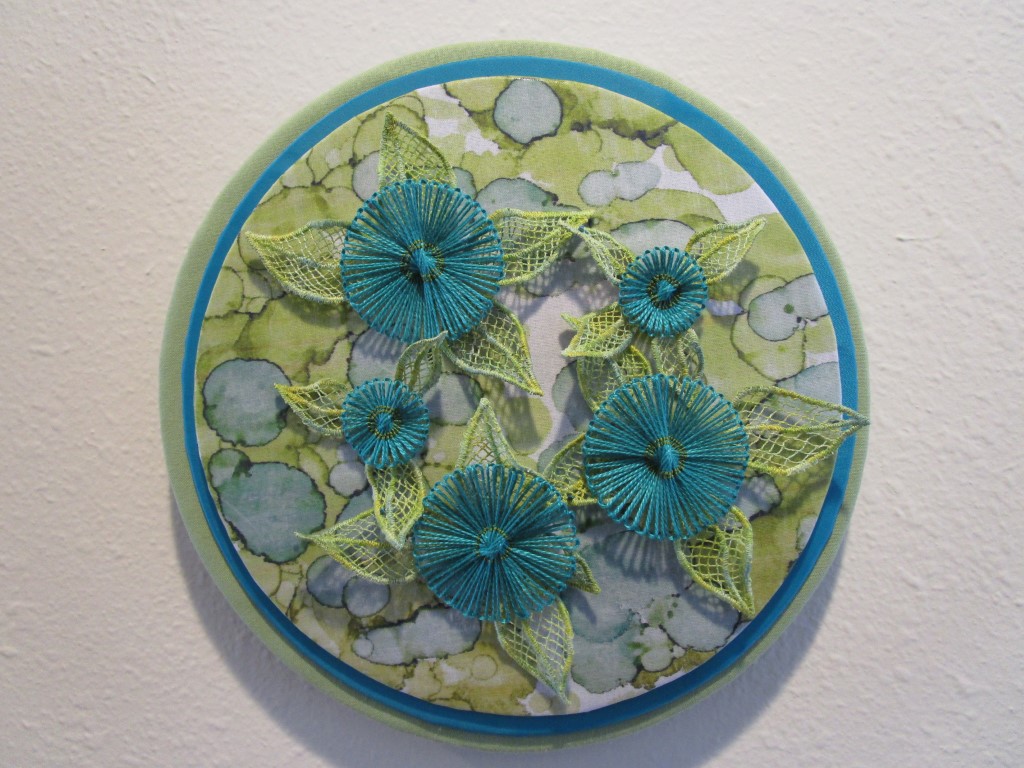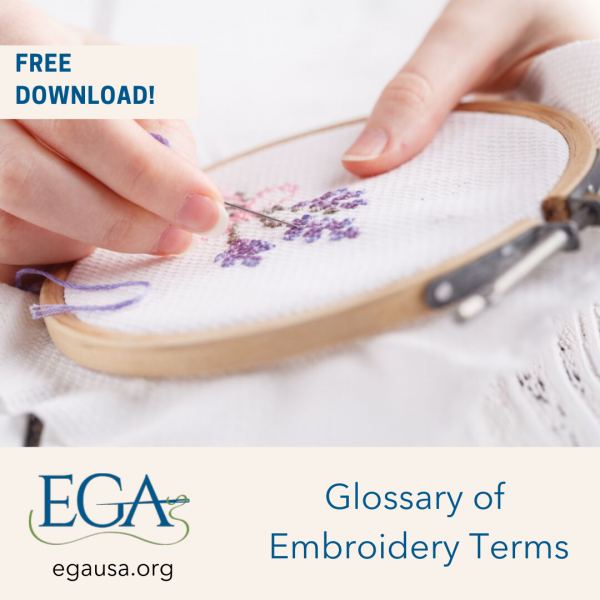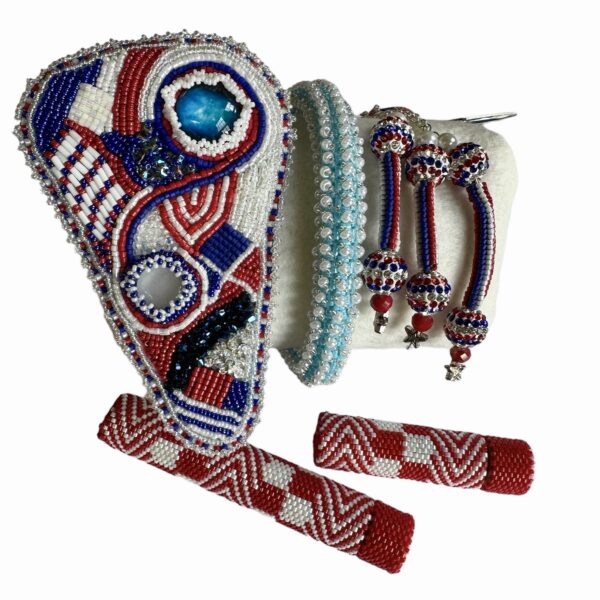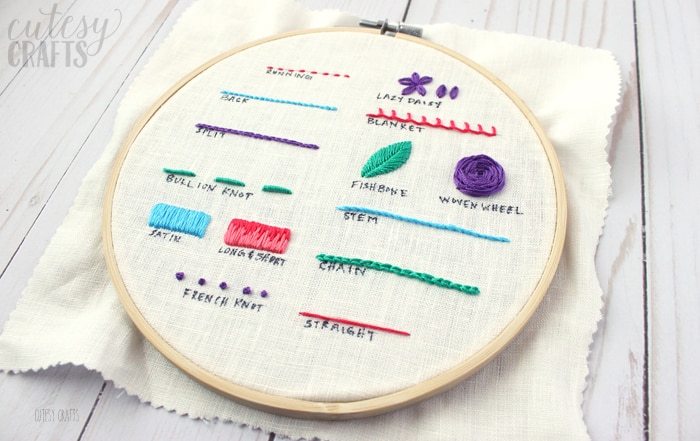Merrilyn Heazlewood has enjoyed a long and storied career as a needleworker. From opening her own needlework shop when she was just 23 years old to teaching herself how to crochet and embroider and pioneering revolutionary designs with silk ribbon, Merrilyn has always lived a life of craft. Refreshingly, that includes embracing imperfections, and keeping several works-in-progress at her side—something all crafters can relate to!
We sat down with Merrilyn to discuss her upcoming Primroses class and learn more about her career in the needlework industry, her inspirations, and just how many projects she’s currently working on—it’s more than you might think!
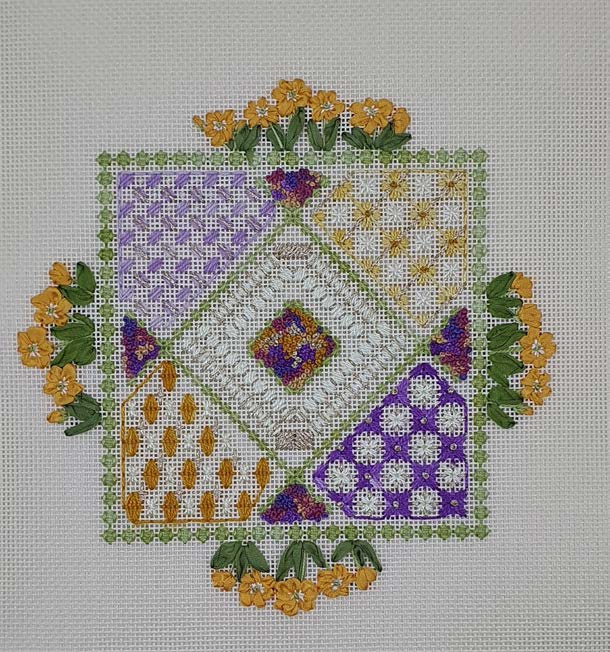
The Primroses class you’re teaching is a companion piece to Cyclamen, which you taught previously. Florals are a common theme in your work. What draws you to botanical embroidery?
As I am a non-traditionalist and a non perfectionist, so stitching nature and flowers allows me a huge range of flexibility and forgiveness.
I grew up with flowers and gardens. My mother and grandmother enjoyed gardening, and then I learnt the delights of having my own garden.
Tasmania has a wonderful temperate climate, which means we can have flowers in the garden all year round. My mother and grandmother always had fresh flowers from the garden in the house. I try to follow suit, even if the vase is small.
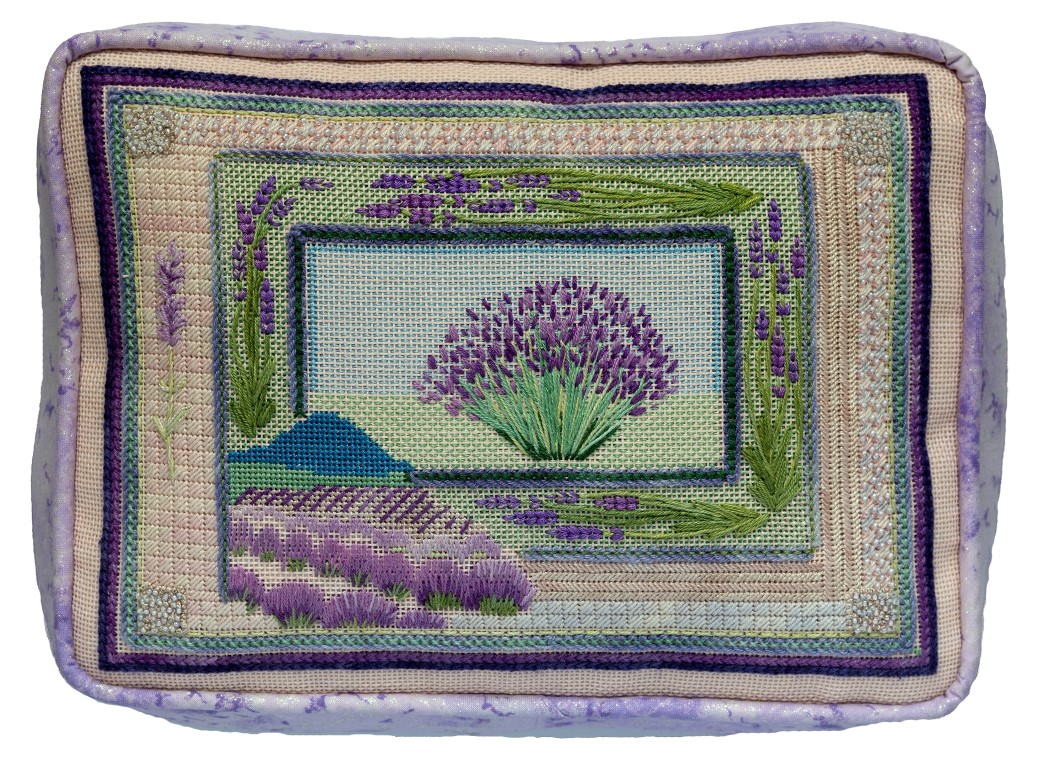
With our strong English heritage and a similar climate to England, our gardens are filled with English or exotic flowers as well as our Australian native plants.
I totally adore spring when all the bulbs are in flower—that comes from my childhood days of growing up on a farm with bulbs in the small paddocks around the house, and feeding lambs.
Bulbs are amazing, they resurface each year, showing where long gone houses used to stand.
You love to design counted canvaswork. What inspires you to work in this style? How has a preference for this style influenced your designs?
We have a strong heritage of English style tapestry, screen printed on penelope (double threaded) canvas, stitched with tapestry wool in tent or basketweave stitch. Therefore tapestry or canvas work has been around me all my life. My mother and grandmother worked chair seats in tapestry – a technique with long durability. The first item I stitched as a six year old (besides making clothes for my many dolls) was a 6” square tapestry, using leftover wool from my mother’s stash. This was made into a potholder. My two older brothers both had to stitch one too, as needlework is great for children to learn hand/eye coordination.
When I opened my shop over 40 years ago, an important part of the inventory was a range of screen printed tapestry canvases. Counted cross stitch was arriving into Australia, which took me on the journey of counted needlework and counted canvaswork/needlepoint.
I do not have a natural ‘straight eye’ (which many of you may have already realized!!!) so the even weave and big holes of 18 count canvas allows me to design in a mirror image or repeat pattern very easily.
I may do a lot of stitching, but I am a lazy stitcher—working in techniques that really suit me. This allows me to design ‘on the wing’ with my projects.
With my love and ease of stitching with silk ribbon, it was no effort to embellish my needlepoint designs with silk ribbon flowers. French knots (are such fun) and beading are two techniques that complement silk ribbon, adding easy texture and sparkle to needlepoint.
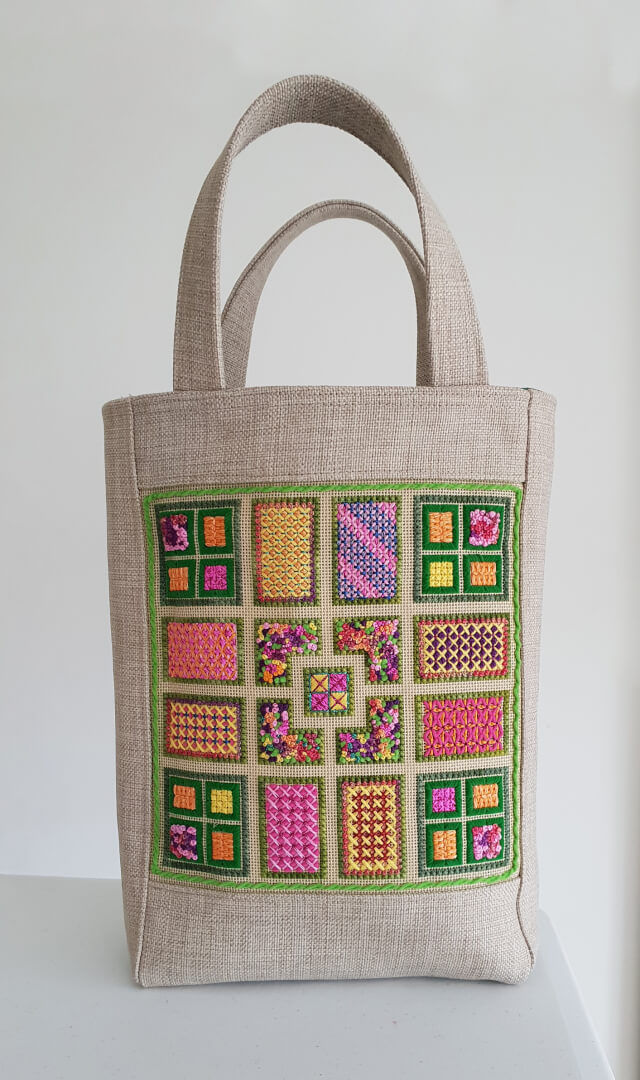
What first inspired you to work with silk ribbon?
Firstly, it was a new technique that I introduced into my store in the mid 1980’s, as soon as it was introduced into Australia. I found it suited my non perfectionist and free form approach to stitching.
I stitched a range of small items including on my clothing, then I worked a 16-square teaching sampler. This sampler created a lot of interest with interstate visitors to my store. The only silk ribbon work they had seen was very different to my style, and they encouraged me to write books.
Silk ribbon is great for stitching flowers; leaves are one stitch, a petal can be one stitch.
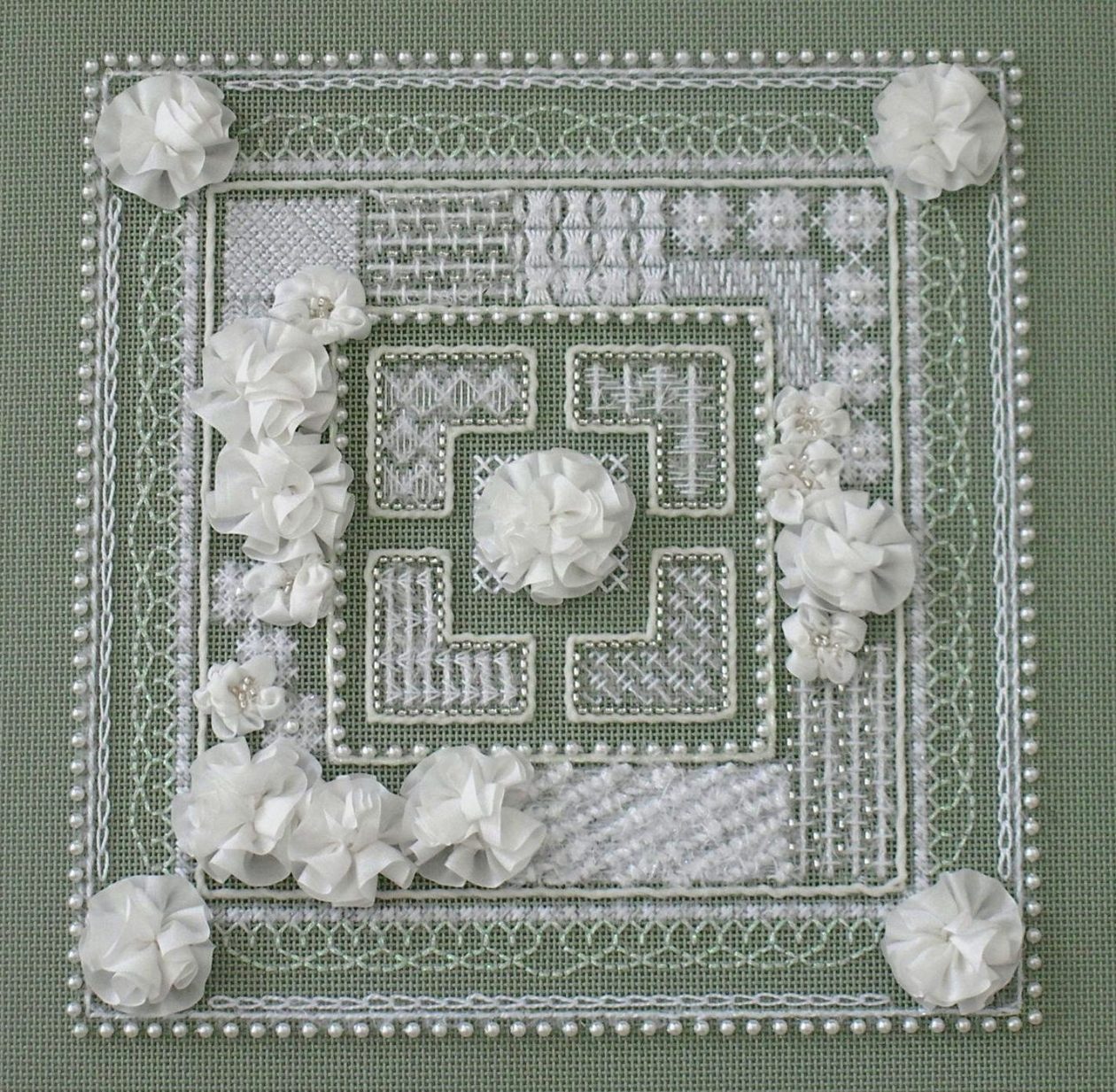
Some stitchers work silk ribbon very easily, others just need to practice a little.
It was so easy, so quick, so individual, so creative, so rewarding and most importantly so forgiving.
Each stitch you do with silk ribbon will be different – I can’t even repeat my own work 100% the same – I just love this easy form of creativity.
The best way to get comfortable with silk ribbon embroidery is simply to relax, play, and practice.
I will frequently suggest to students new to silk ribbon that they have a glass of wine before stitching – I’m not advocating alcohol – I just want students to relax about this new soft, wide, flexible medium.
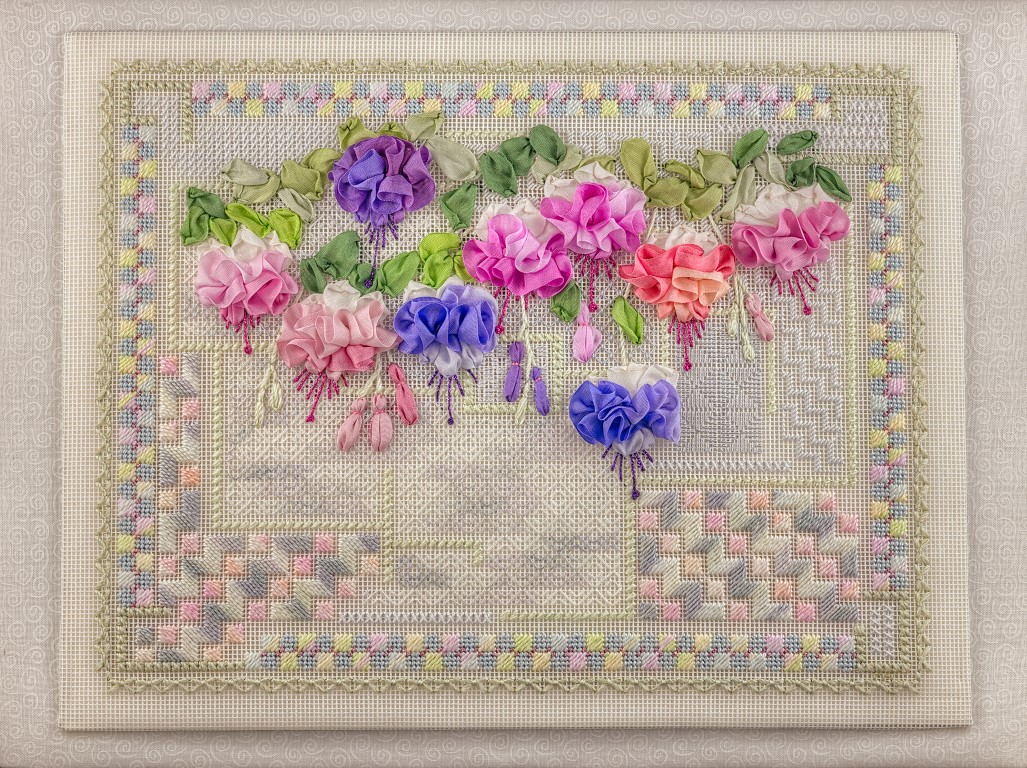
In the 1990’s I stitched, wrote, and co-ordinated all formats of the production of seven books in silk ribbon: Spring Bulb Sampler, Fuchsias, Rose, Cottage Garden (out of print) Romantic Garden, Silk Ribbon Miniatures, Floral Embellishments (a book showing silk ribbon on clothing, and yes, you can certainly wear and wash silk ribbon. 😀)
You opened a needlework shop on your 23rd birthday without having received any formal training in business or needlework! What motivated you, and what was it like navigating that experience?
A friend who is about 15 years older than me kept saying I should open my own shop or go to University (College).
I had worked for four years in a small jewelry store, so I knew I could sell items and interact with customers. A department store that had the best selection of needlework and craft items in my home town closed. Therefore, there was a space in the city for a new store – I asked a range of people for advice; they all said, yes please, open a shop.
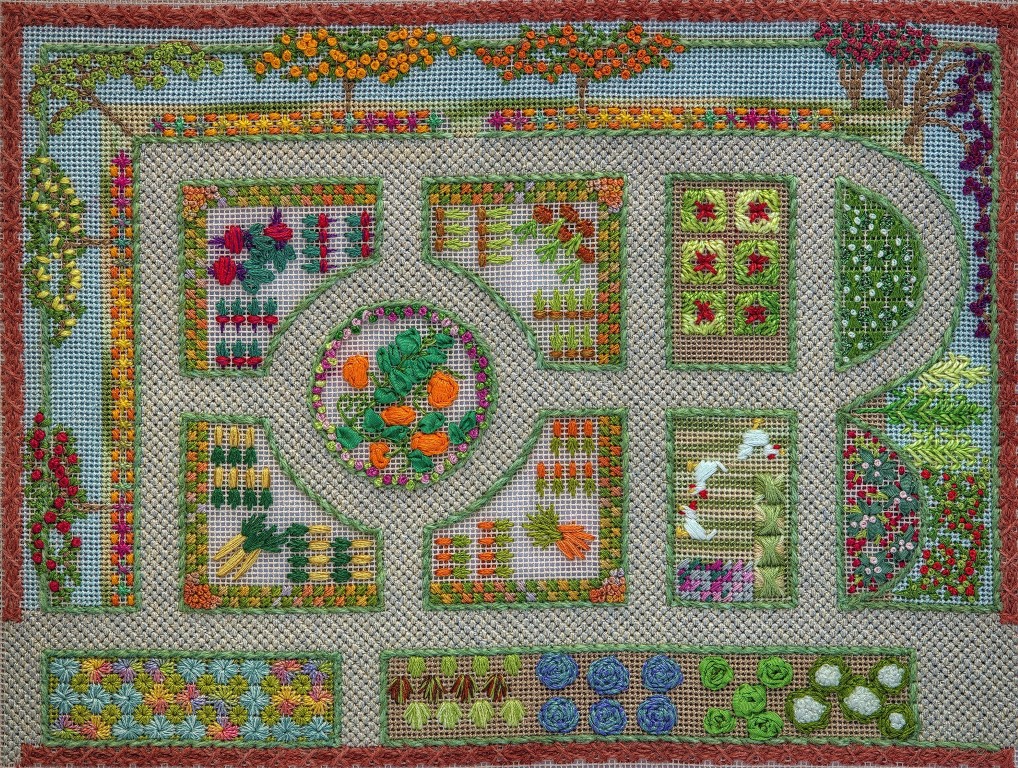
I have a strong creative heritage, but my late mother was very left handed, and I’m right handed, so she could not teach me how to crochet. At 12 years old, I taught myself to crochet from books—I later realized not everyone can do this. Any crafty thing I wanted to do I could pick up quite easily.
I had to learn to find wholesalers, and what products were available. It was at a great time in our industry—counted cross stitch was just coming into Australia. There were not the range of threads that are available now, so I could open the shop with my savings from working for four years. That would be extremely hard to do now.
You grew up in Northern Tasmania. How has life in Australia influenced your process?
Australia is very isolated from the USA and Europe. From early white settlement, we have had to innovate, adjust, and compromise.
Australia is a very large country. It’s bigger than the USA (excluding Alaska). We are used to ‘having a go’ as the Aussie saying goes—try and see what happens.
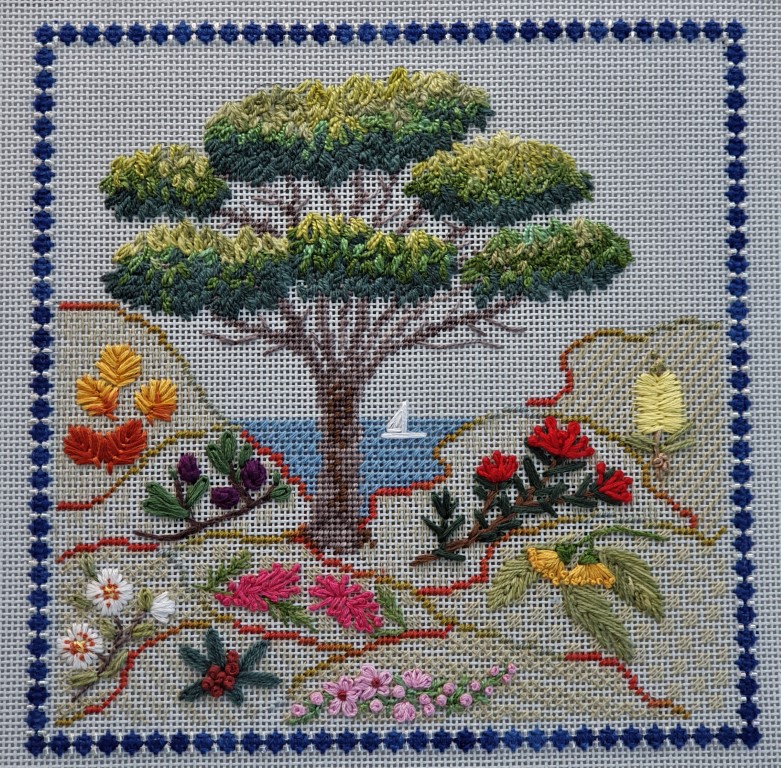
Tasmania has a very strong craft/creative heritage, mainly due to our climate, being the ‘small island’ at the bottom of ‘the big island.’
My mother and grandmothers were arty craft women, especially my maternal grandmother, who was a woman before her time with the broad range of craft items she made.
How do you move from idea to design?
First, I always like to set myself a challenge with each piece of needlepoint I create, it could be to center a project around one stitch and its variations, work a stitch I don’t usually use, stitch in a color I am uncomfortable with, or stitch a new style of subject, ie a scene. I can be inspired by a thread color range, a piece of fabric, a memory of a great scene or item, the layout of old gardens, a conversation with a student, a new plant in the garden coming into flower, the roof line of a building, stitching with colors I don’t usually stitch with, looking over a garden fence as I walk around, the list goes on…
So, I select a subject theme: a color, thread type, stitch family, a photo or picture, a drawing of a Garden plan. Then I plan a color palette that is usually reduced by 50% when the project is finished. Then I just stitch. I never pre graph a design.
The border is worked first, or by the time about 20% of the design format is stitched.
The graphing and notes are made once the design is completed—this takes days and days to do.
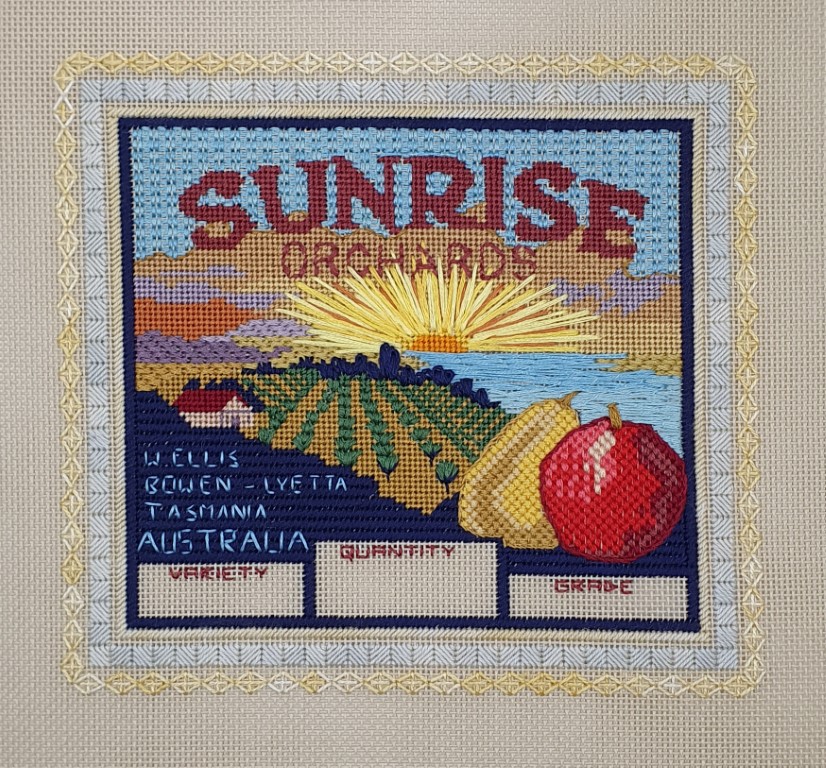
If you follow me on Instagram you will notice that over the past few years I have been stitching scenes, eg Cricket Game, Sheep, an Apple Case Label. My cat Princess is a new project. She is being stitched in a stylized format. I’m not sure how this project will go, but I just ‘dive in.’ Why not follow me on this journey on Instagram? The challenge for this project was to stitch in a stylized manner.
With these projects I do a very basic drawing to get the proportions correct. I either draw straight onto the canvas some very basic lines or trace that onto the canvas.
What influences your choice of materials when creating a new design?
The design, my mood and the ease of sourcing a product.
What embroidery or color trends (if any) are you drawn to this year?
As I find counted thread work on linen and canvas so easy, this year I have started to ‘play with’ goldwork threads and to fine tune my skill with crewel embroidery, a technique I have always found a challenge.
My students sometimes guide me into an area that I may not have considered. Our world of embroidery is so big, with so many different techniques and approaches to our stitching projects.

What are you currently working on?
At the moment I have a big range on the go, I must get a few finished!!
- I’ve nearly finished the 3rd in the Series of four Tiles, which may be selected by EGA in the future. The needlepoint is finished, I just need a few hours to stitch the ‘feature flower’ in silk ribbon.
- The Road To Tarraleah, a landscape scene of my city with its river and winding road that lead into the highlands where I host a Retreat each year.
- I’m at the finishing stages of Celia’s Sheep.
- I’ve just drawn Princess (my cat) enjoying the winter sun in ‘her garden.’
- I’m playing with a three dimensional project.
- I attended as a student a crewel class recently, so I have that piece to finish.
- In my summer break from classes (6 months ago) I started two goldwork projects; one is my design, the other is a kit from a UK designer.
- A wedding present. When I stitch a present I always discuss the subject with the recipient or someone close to them. I recommend this to my students.
It’s so, so disappointing to put hours and hours of work into a project and then have it ‘disappear into thin air,’ ie it’s not displayed or used.
I think that’s enough to list at this stage …… there are more UFO’s!!
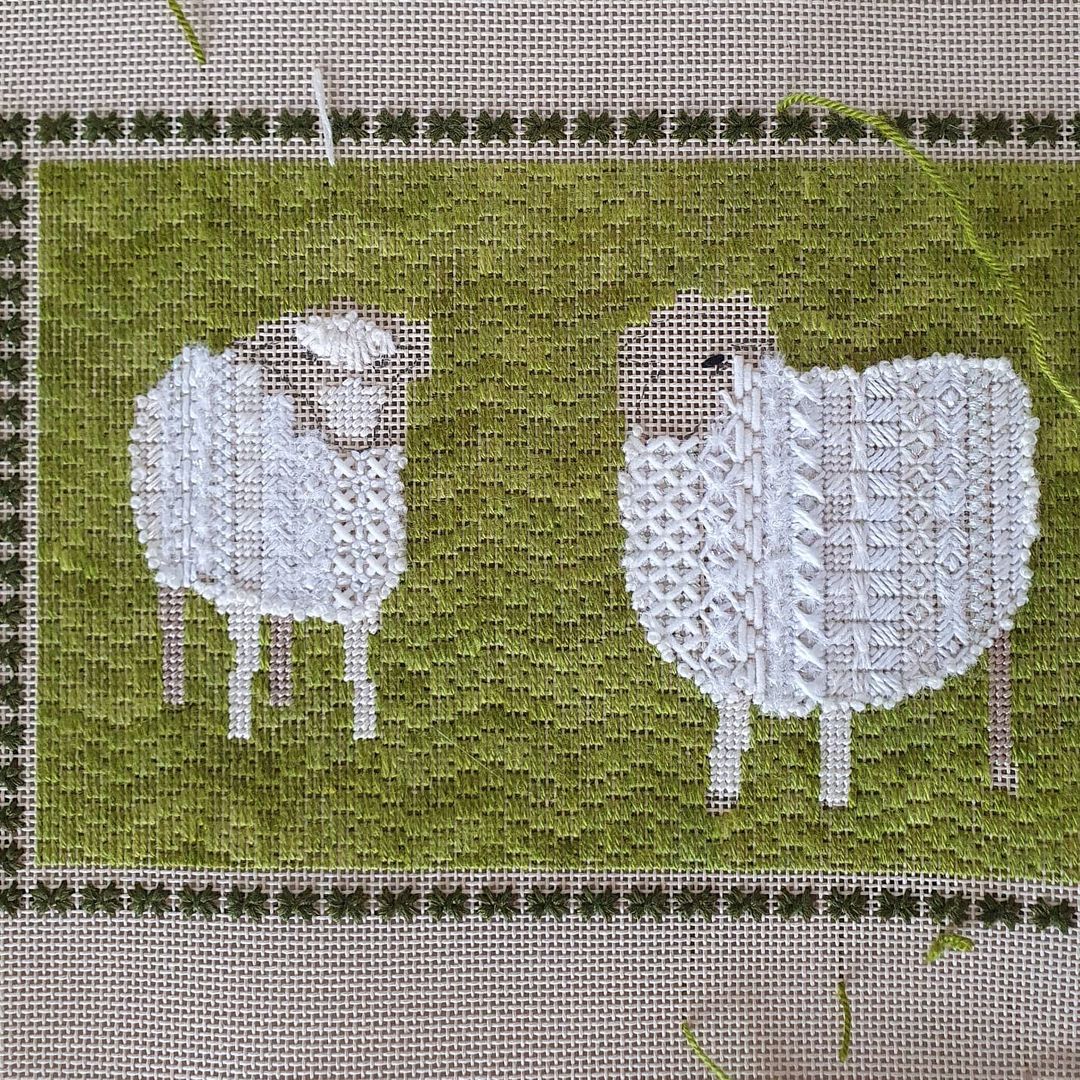
Do you have a daily/weekly practice that you’d recommend to other embroiderers interested in honing their craft?
Our lives are so individual, some have more time, others are so busy they struggle to get 30 minutes of stitching in each week.
All I would recommend is that you stitch whenever you can, it’s so relaxing, so good for ‘zoning out’.
Stitching is my business and more so my relaxation and ‘unwinding time.’ If I don’t stitch frequently I get a little techie, niggly, unsettled… half an hour with thread and needle and I’m grounded again.
If you are working on a project that you are struggling with, start a new project.
I always recommend to people that they have more than one project on the go at at time. Your mood and/or the light you are stitching in can influence you so much. Work on what feels right and please, please do not be hard on yourself.
My mantra is …. stitch to the best of your ability, learn as much as you can, then stitch with contentment and not judgment, and please, please do not unpick unless it is really necessary.
Stitching is a world of contentment—your world, not your friends, not the person who sits beside you in class or at Guild. It’s your project, your world, your enjoyment, your contentment.
Make sure you are in good light or have great lighting around you. My best piece of equipment to help me with hours of stitching is my Lowrey frame. You may prefer a Systems 4 or another style of stand that holds the frame/hoop for you.
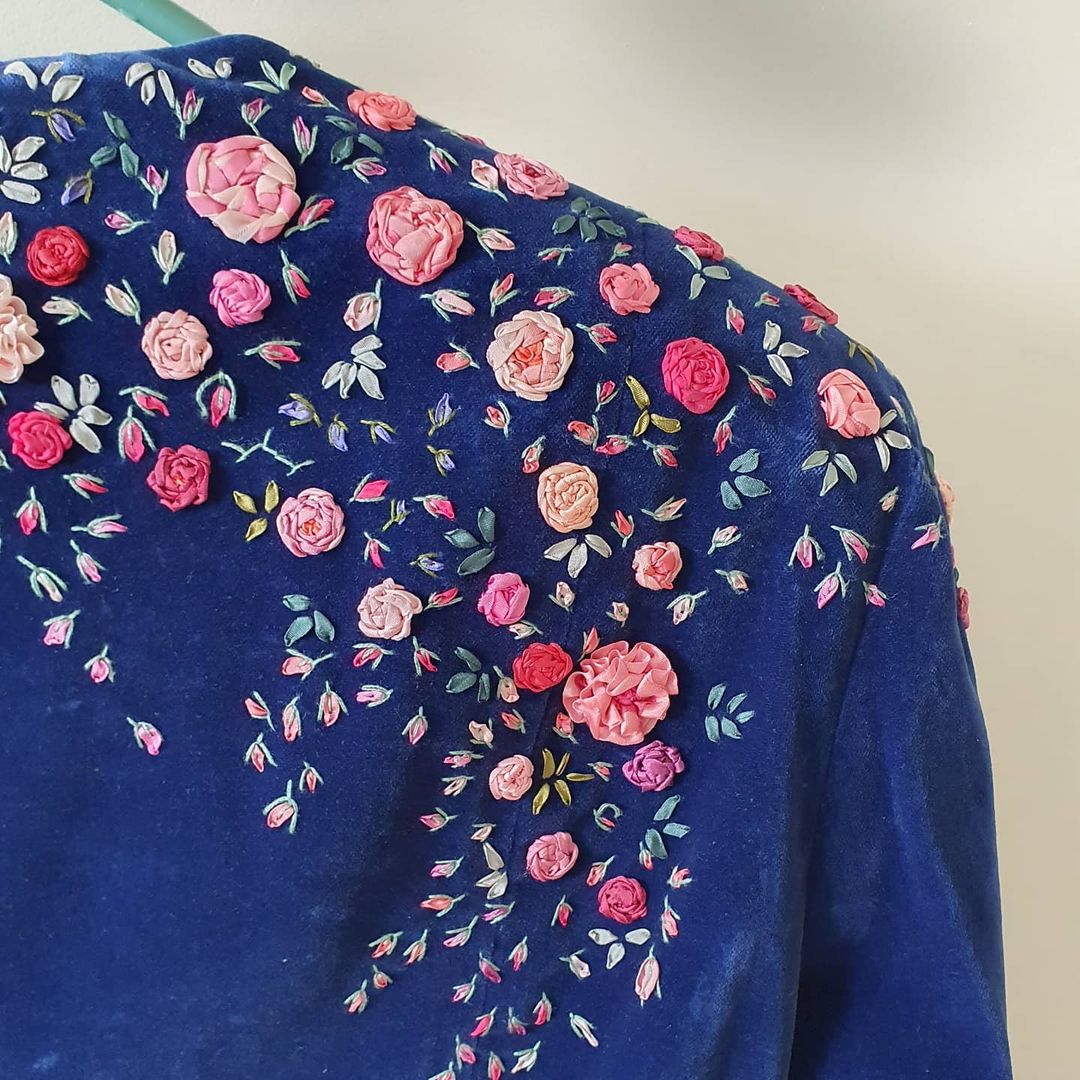
What do you hope embroiderers take from your Primroses course?
The joy of stitching is number one.
Maybe stitching with a new thread, or a new stitch. This could be the first time you will stitch one of my designs (remember: designers all have their own way of writing instructions, and to add to this, I’m a Aussie stitcher!). Maybe it’s the first time they have worked with silk ribbon.
